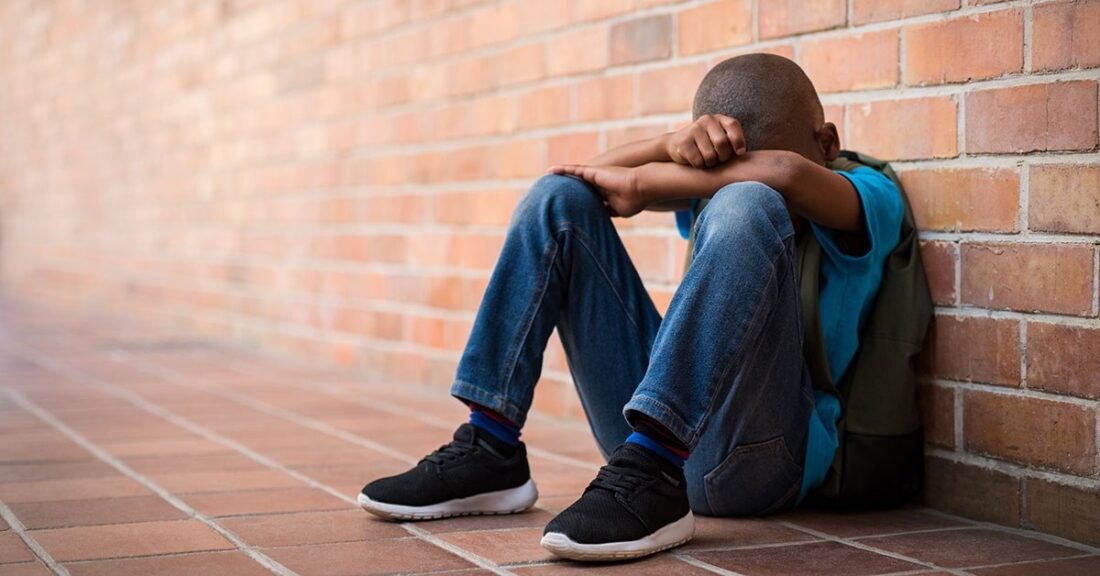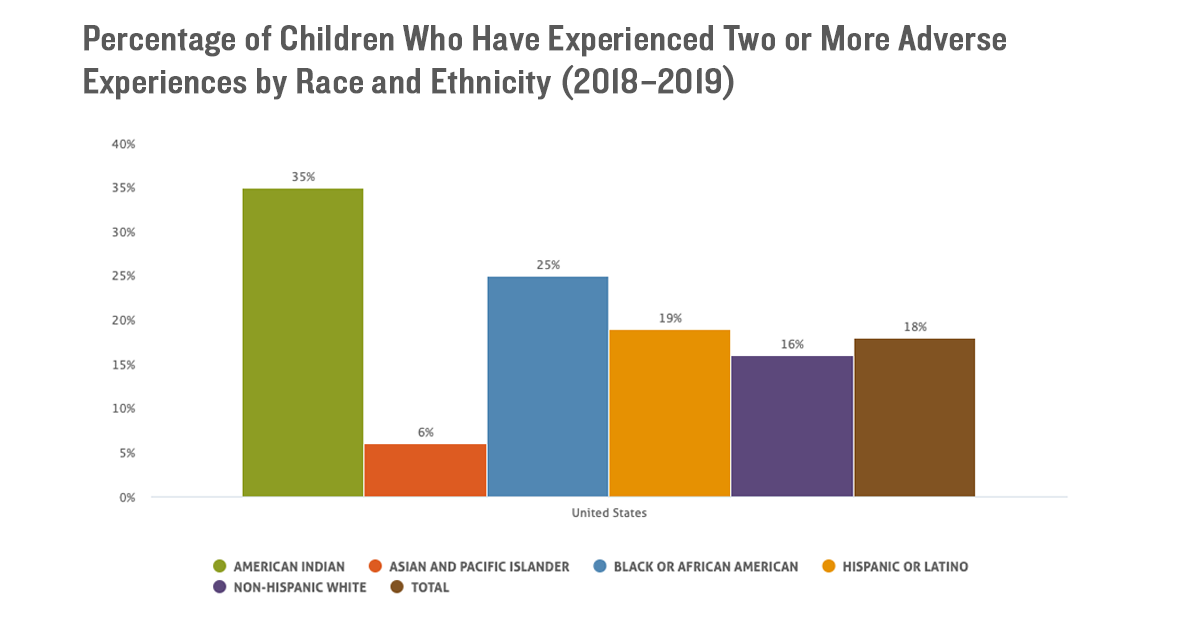American Indian and African American Kids More Likely to Experience Multiple Adverse Events

Nationally, more than one in three American Indian children and one in four African American children has had multiple adverse experiences, according to new data from the National Survey of Children’s Health.
What Is an Adverse Childhood Experience?
Adverse experiences are potentially traumatic childhood events, such as parental death, divorce or incarceration, family or neighborhood violence, frequent socioeconomic hardship or living with someone who was mentally ill, suicidal, dealing with substance abuse or racially biased. These experiences can disrupt children’s healthy development and have long-term, harmful effects on physical health, mental health, education, and other life outcomes. The more adverse and traumatic events a child experiences, the greater the risk of lasting, negative impacts.
The promising news is that adverse childhood experiences and their harmful effects are preventable. Policymakers can work to ensure that effective systems, policies, and services are in place to strengthen under-resourced communities, support families, and provide all children with safe, stable, positive relationships and environments.
Racial Inequities in Who Experience Adverse Events
While adversity is common among U.S. children, with nearly one in five kids — or more than 13 million total — having multiple adverse experiences, the disparities for American Indian and African American children are stark and have persisted across all years of data available from this survey.

The data reveal a need to address the systemic inequities driving these differences and to increase support for the nation’s most vulnerable children and families. At the same time, the data also reveal a hopeful trend, with the percentage of African American children experiencing multiple adverse events declining from 33% in 2016–17 to 25% in 2018–19.
Where Adverse Childhood Experiences Are Occurring
At the state level, data show varying levels of childhood adversity across the country, from a low of 13% of children having two or more adverse experiences in New Jersey to a high of 29% in Arkansas in 2018–19. Previous years of data show a similar spectrum.
Access family and community data on the KIDS COUNT Data Center:





